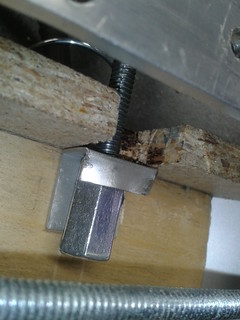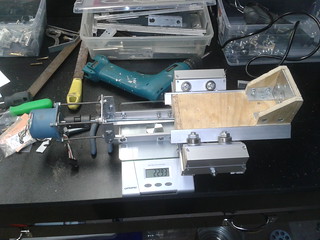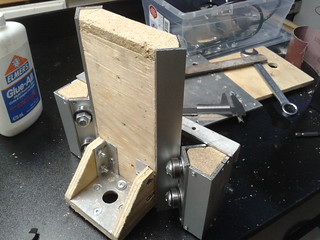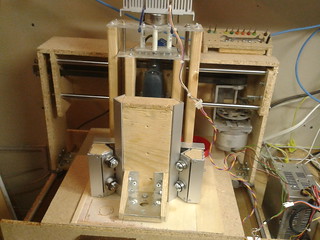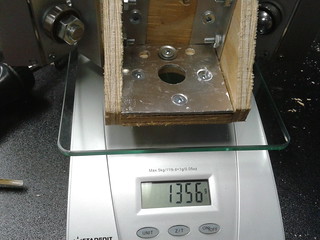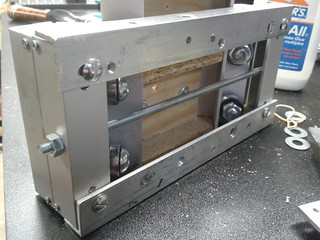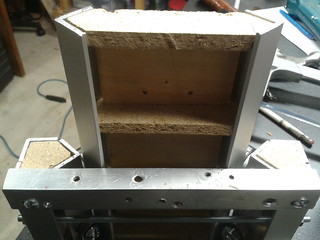The new axis is complete, installed and tested - yeah!
Where did I leave off, oh yeah, the spindle mount and linear bearings where built. Next step was to add the actuator to the assembly.
Using some lighter weight angle aluminum (3/4"x3/4"x1/16"), I constructed risers. A plate across the top holds the bearing through which a threaded rod with a locking nut rests. The stepper is reused from the big CNC in the man-cave (currently awaiting a much needed upgrade). It is a 5V 1A 35oz stepper - adequate, but barely. A spider coupler joins the threaded rod to the stepper, which is held above the bearing plate by 4 threaded rods and a collection of nuts (one more if you include me).
Barely visible near the middle of the bottom cross brace is a screw that extends into the assembly. One of (many) holes nearby complements that screw - together they will push and pull the bottom of the assembly out to provide an adjustment to help square the bit to the table.
Attaching the threaded rod to the spindle holder was a matter of crimping some of the light gauge aluminum around a 1/4" union and fastening the aluminum to the top of the holder. The better aligned this is with the stepper the faster things can move without binding. I left a fair bit of play in the spider coupler / weight bearing at the top that I am getting a respectable travel rate.
The whole thing weighs more than the previous design. 2.3 kgs is without the spindle. With the spindle it weighs 2.8kgs, which is about a full kg more than the current assembly.
And here it is installed! Some tweaking and adjusting, but so far it is very square to the table. Total travel is almost 4". Feedrate is 9-10ipm (which is slow, but compared to the 3-4.5 that I was getting on the previous model, much better!). I have gained a couple inches on the X axis due to the back of the assembly NOT interfering with the gantry, so that's good. However, I have lost a couple inches on the Y axis because the Z-axis assembly sticks out further - that is not so good.
Whipping around at 100ipm there is a lot of bouncing / shaking. The whole machine needs a lot of stiffening - so for now, I'll run a lot slower.
I did run into an interesting problem - I put a brand new, long cutting tool and did a small test run. The collet slipped and let go of the tool, causing some deep gauging in the table. I have since read up on why it is important to clean the oil off the cutters before using them....

